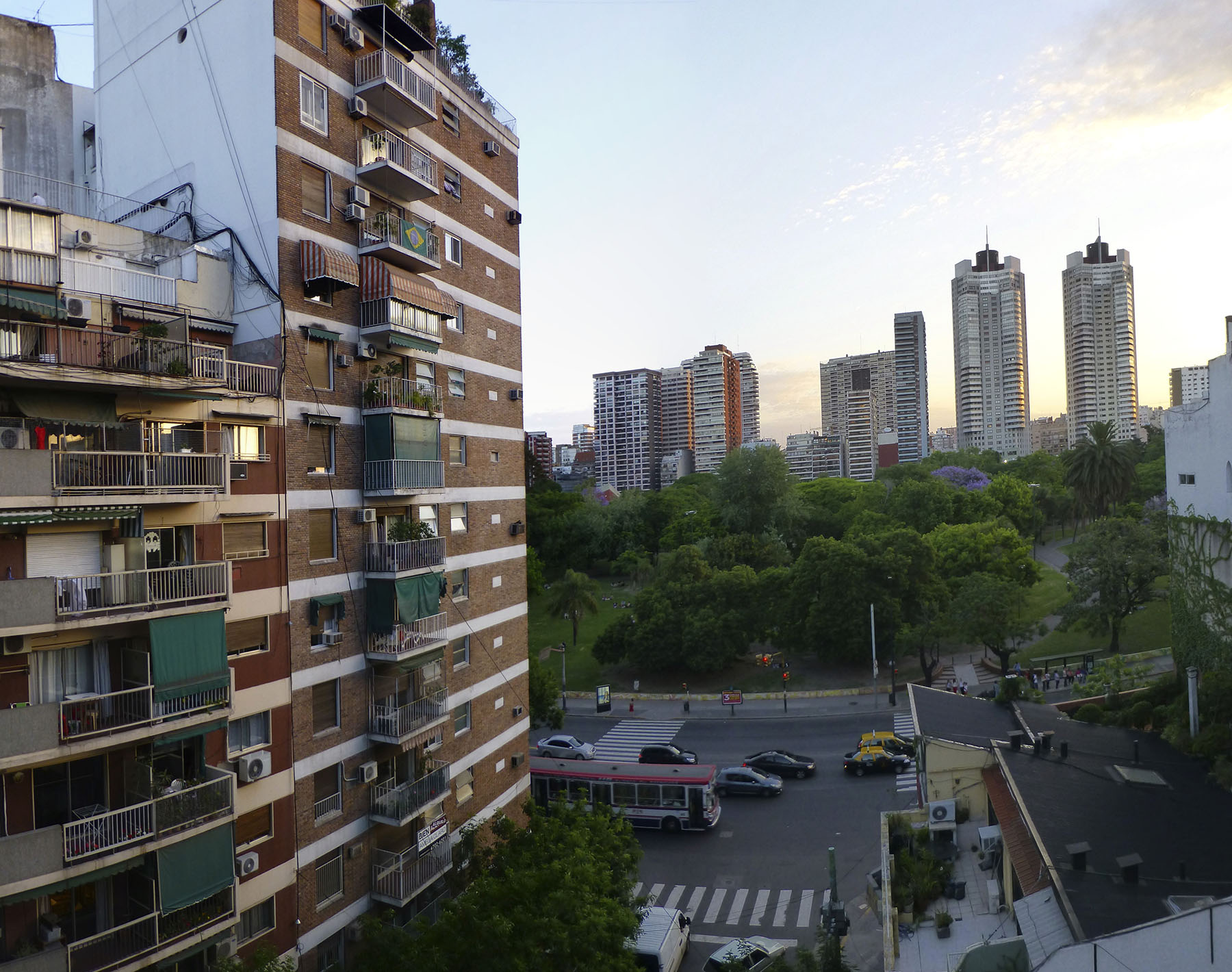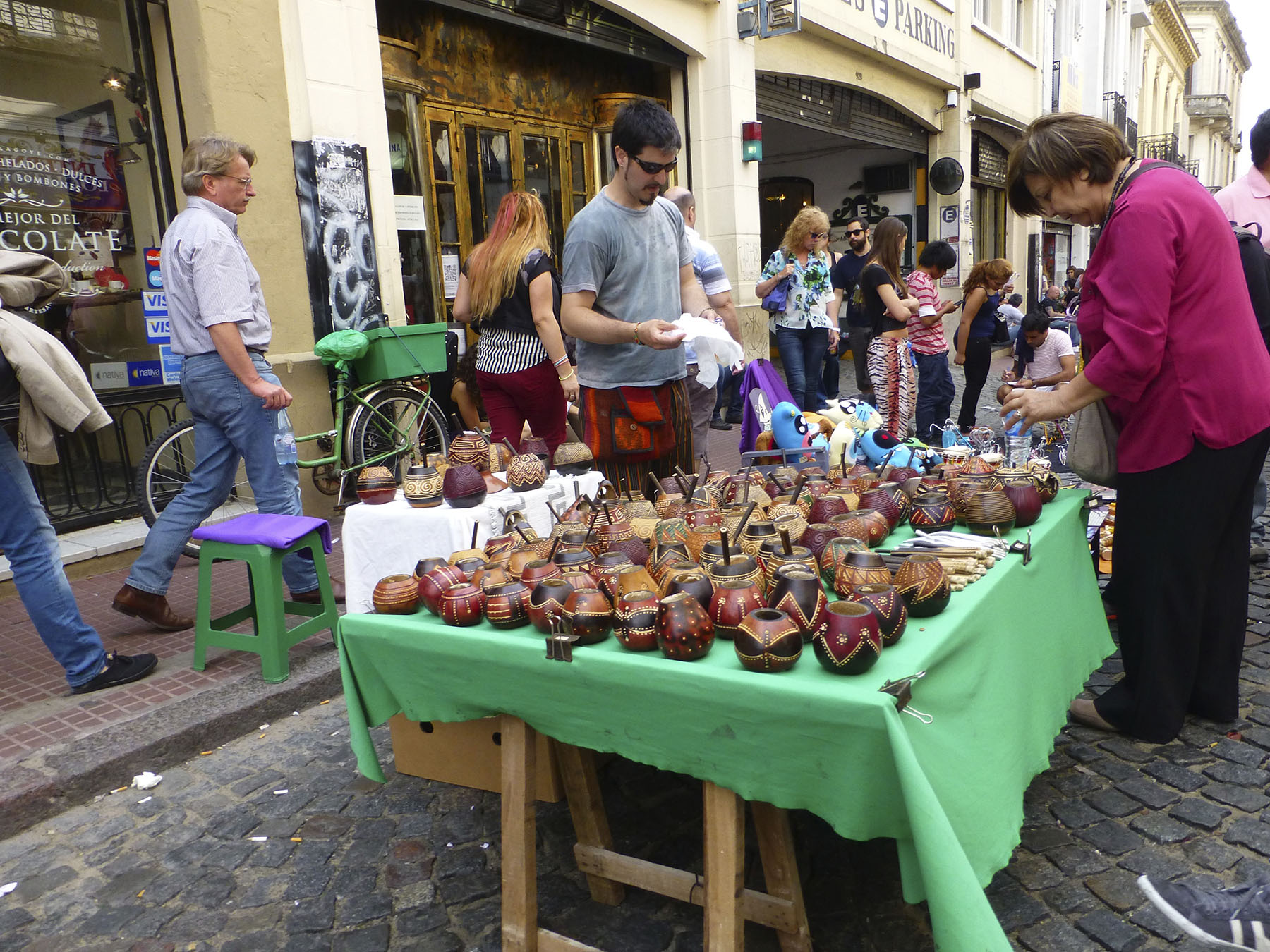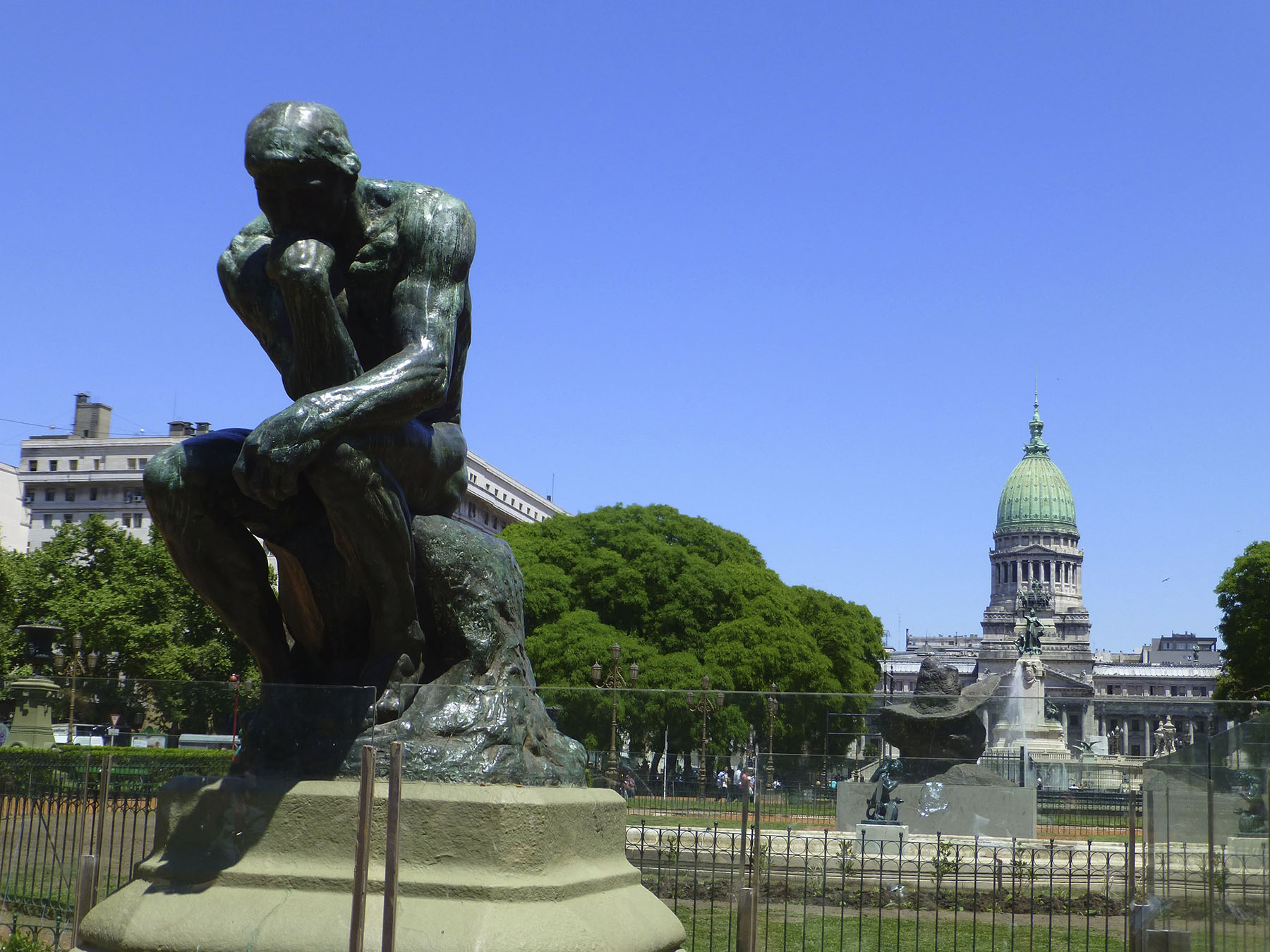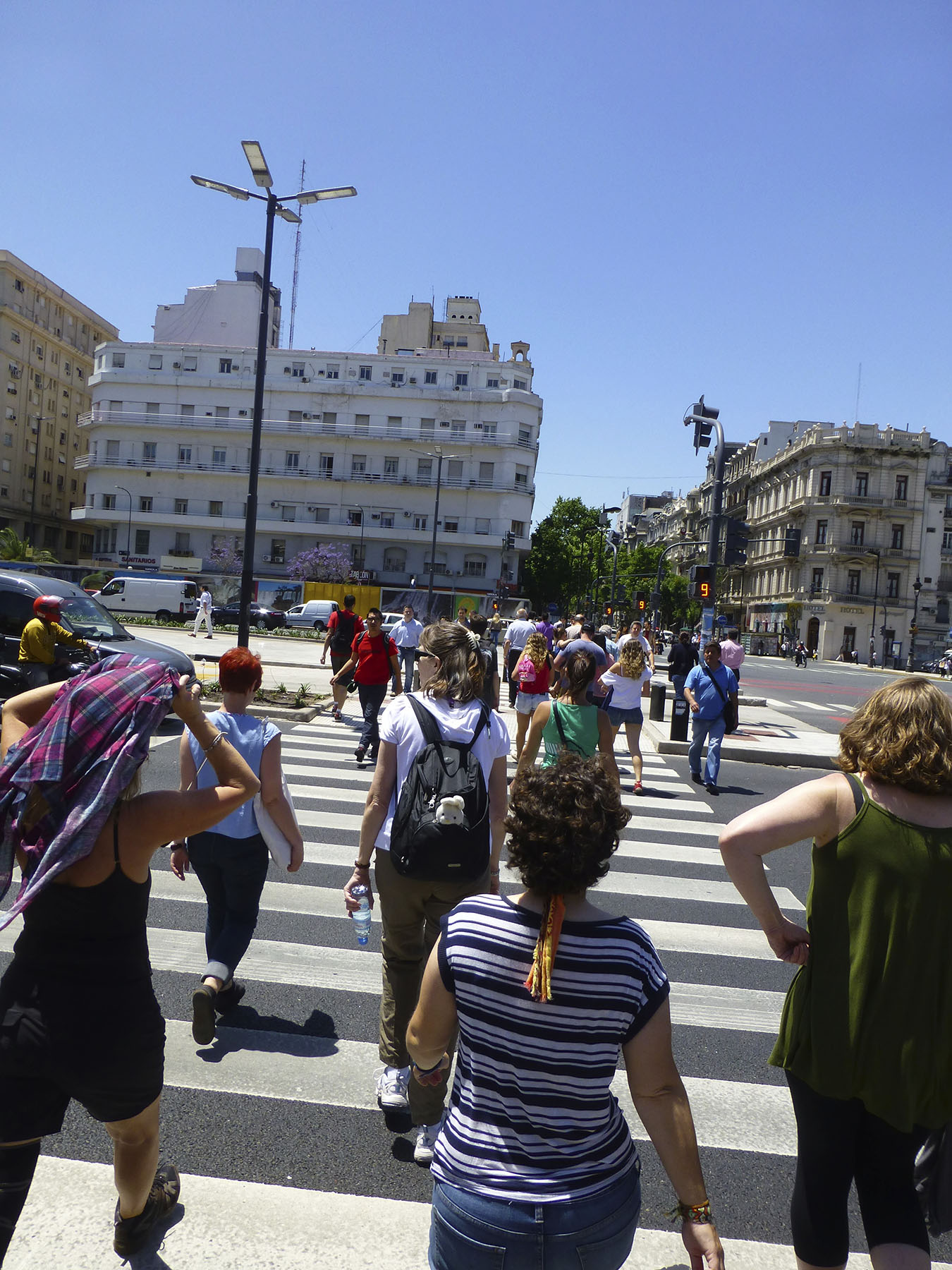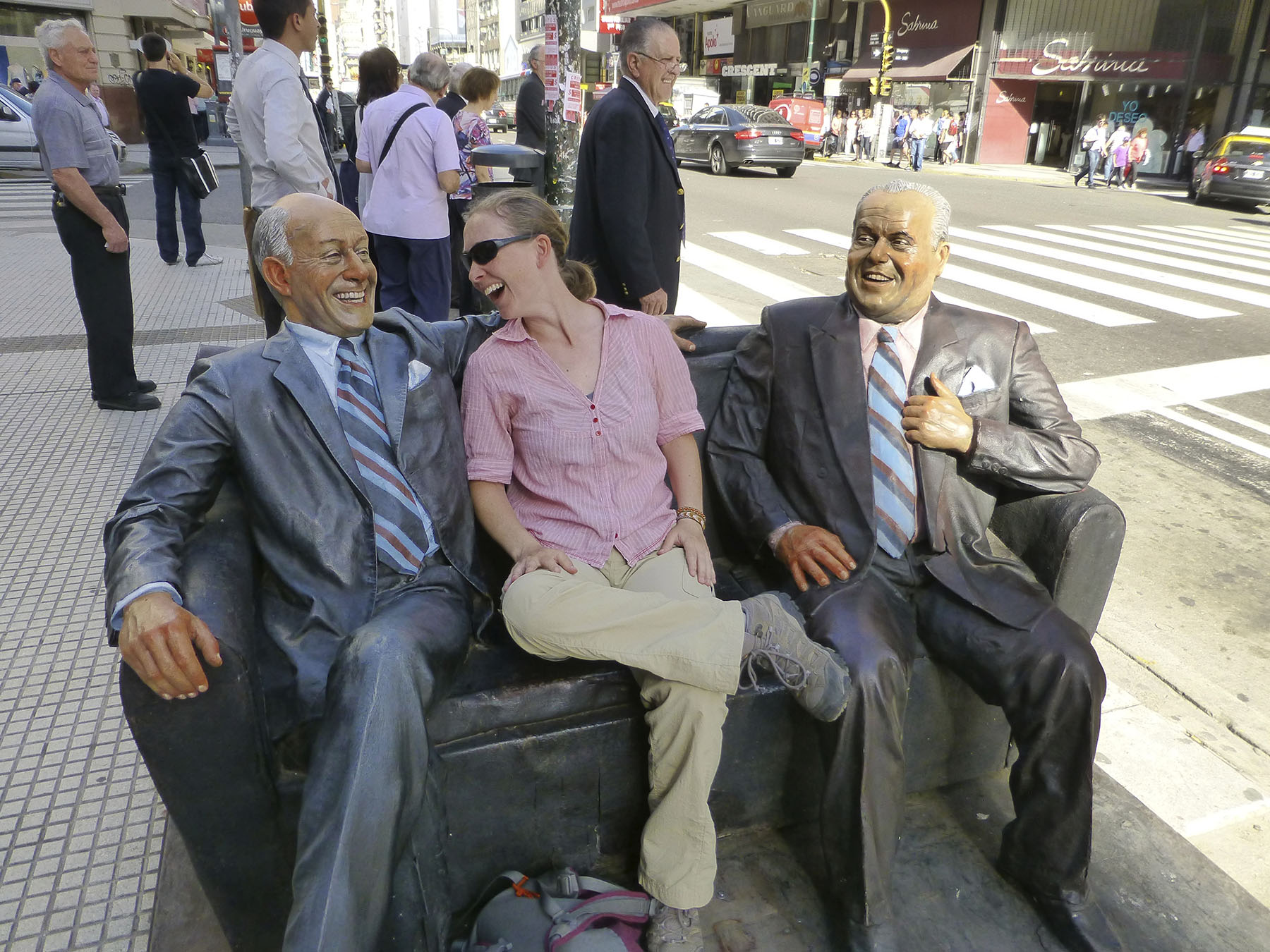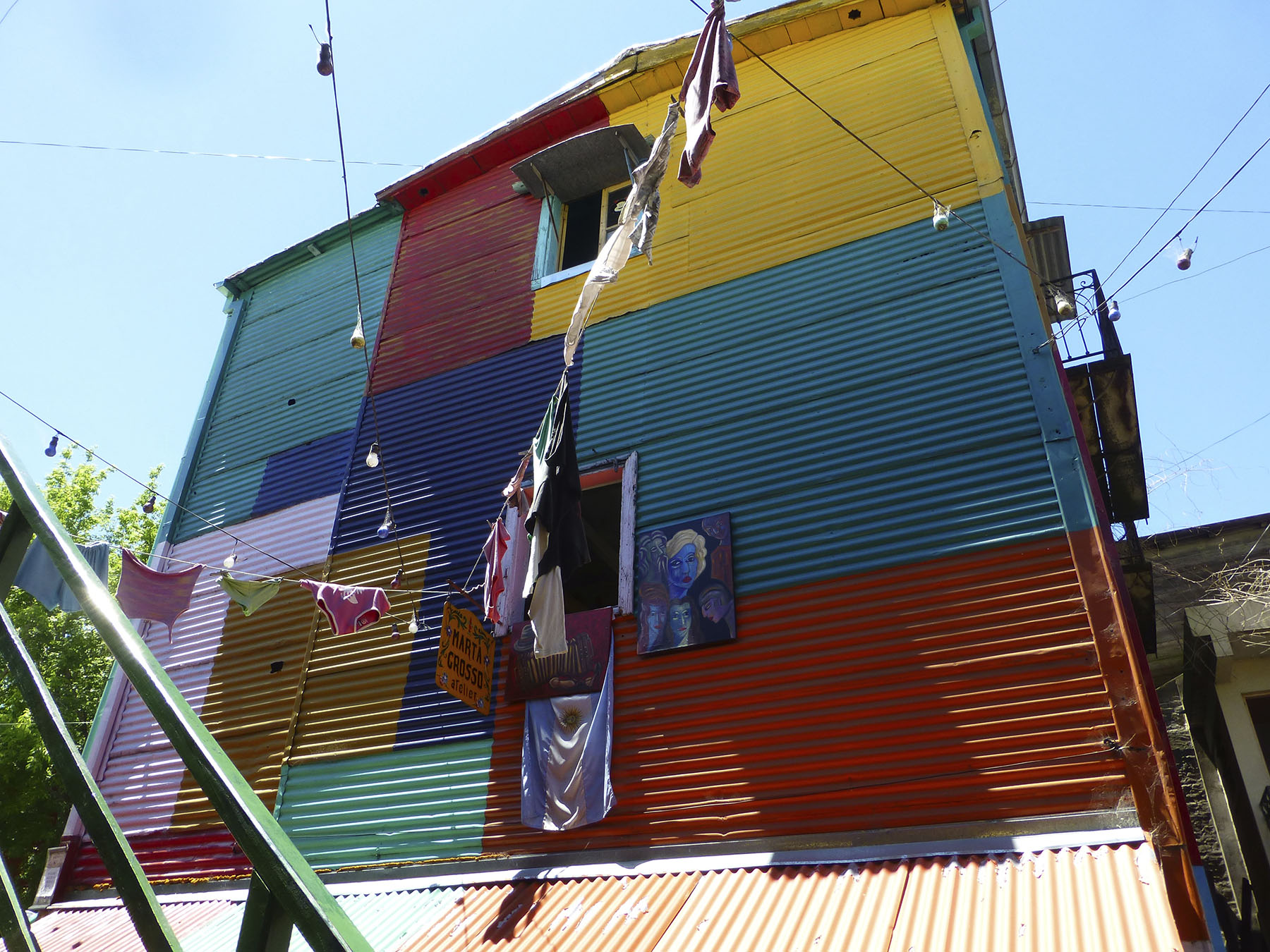11/09/13 - 11/15/13: Buenos Aires, Argentina
The best way to know a city is to walk its streets. The sights, the smells, the sounds – all creating a rhythm that pounds against you like a beating heart. Its pace can be dangerous, timid, exciting, or even downright painful. Buenos Aires’ heart beats strong and passionate; you feel intensity with every step, your blood buzzing with excitement. Then again, maybe that’s just the 5th cup of coffee vibrating through your veins.
Our introduction to Buenos Aires was quite fitting. We happened to arrive on Gay Pride day, and our airbnb host, Veronica, encouraged us to go out and enjoy the celebrations. She said Buenos Aires’ Gay Pride was the biggest in all of South America. With that claim to fame, how could we resist? (And, of course, there was the other obvious reason for attending…)
Despite our lack of Spanish-speaking skills, we were able to hop a subway train, no problem, and enter the city center with ease. We arose from the underground tunnel and found Plaza de Mayo overflowing with life: bodies dancing, food sizzling, rainbows flying. Fabulous drag queens were flaunting their creativity in outlandish costumes that put Broadway to shame. There was no reigning in the length, the width, the height – the heels were as tall as me and the wigs had wider curves.
We were mesmerized by the energy and found ourselves eating chorizo on the sidewalk while people watching and waiting for the parade to start. For over an hour we lingered. Drums boomed and people chanted, but no forward movement commenced. We began to wonder if this was the head of the parade, the tail of it, or if we’d missed the procession altogether. Were we too late? Just when we were about to lose hope the marching kicked off with a primal scream. Buses rolled by like moving nightclubs, fully equipped with bombastic sound systems, spinning DJs, and throngs of dancers making the wheels bounce under their rhythm. Genders were bending like curves in the road. You couldn’t tell who was man or woman, the street was simply filled with people having a very, very good time. Anyone could join in the parade, and many did, dancing alongside whichever float took their fancy. We impressed ourselves by staying out until the streets were left in a ruin of rubbish. No small feat for us considering it was a travel day.
The next morning we arrived at Plaza Dorrego to experience the famous San Telmo Sunday market. Antiques, handicrafts, art and music filled the streets. We strolled along, drinking in the art and tasting the culture like a delicious meal. The flavor of the market transported us to another time and place. It felt as though we were no longer in South America but in Europe at the turn of the century. Book peddlers dusted ancient tomes, craftsmen pounded metal, and violinists played while people danced the tango. There was even a man frozen in a silent era pose, his clothes splayed out as if in a windstorm, his glasses askew like a disheveled Harold Lloyd.
Music floated around every corner. We heard guitars, cellos, pianos, accordions – if it could be pumped or strummed it was played on the streets of San Telmo. One band was a combination of all of the above and then some. They sounded like Blue Grass meets Mariachi. Their musical fusion was captivating and we sat on the steps of a dilapidated Catholic church and listened to them play.
The atmosphere of San Telmo was spellbinding. Artistry dripped from people’s fingers. Sound and color pooled at our feet. I loved it so much I wanted to become a part of it – take a tango lesson and buy antiques; suck yerba mate from a metal straw out of a carved gourd. Sadly, I did none of these things, but given a few more weeks in Buenos Aires I most likely would have, while wearing a fedora and strumming a mandolin, no doubt.
In between the parades and markets Katie was having a love affair. Perhaps I would’ve been jealous if I weren’t having one of my own. Every ounce of weight that we’d lost on the W trek was quickly regained due to a sudden overindulgence of café con leches and submarinos. Neither of us has ever been crazy about coffee, but the flavor of the café con leche was so smooth and rich that each sip was like swallowing a cloud of cream. A submarino gets its namesake by the way it’s made: dunking chunks of dark chocolate into steaming hot milk. Delicioso! Yep, we were often buzzed on caffeine and sugar whilst strolling the streets of Buenos Aires.
The rich history of the city was more thoroughly presented to us the next day by an impassioned Porteña named Maggie. She led us through the center of Buenos Aires on a free walking tour, which started at the Congreso and ended at the Obelisco de Buenos Aires. Maggie had more energy than a crack of thunder and was just as fascinating to listen to. We discovered so much about Argentina and its capital it’s difficult to know where to start, but I’d like to share some of what we learned with you. So, if you’re interested, please join me now on a free reading tour of Buenos Aires (the Cliff’s Notes version):
- Aregentina has two national holidays celebrating their Independence: May 25th and July 9th. Let me explain…
o Following Napoleon’s deposition of King Ferdinand VII of Spain, the Argentinians ousted their Spanish Viceroy and declared their own local government. The date was May 25th 1810, and the people now ruled themselves and were no longer subjects of the Spanish crown…unofficially.
o Officially, Argentina declared independence from Spain on July 9th, 1816.
This means Argentinians celebrate two days of independence every year, which means they get two days off of work! How great is that?
- Porteños are what people from Buenos Aires call themselves. The word refers to a “port,” as in the port city of Buenos Aires.
- Porteños speak Spanish very fast and with a unique accent. Because of the heavy Italian influence, Argentine Spanish sounds totally different and can be difficult to understand, even for fluent Spanish speakers. For instance Plaza de Mayo is pronounced like this: “Plaza de Ma-show.” Yeah, that one throws you for a loop.
- Speaking of the Italian influence, Buenos Aires has some of the best Italian food in the world (aside from Italy, I imagine). Their gelatos and pastas are to die for. In fact, after our tour, Katie and I ate at a restaurant called Brocollino where they make homemade pasta and sauces. The pesto was so good it brought tears to Katie’s eyes. I’m not joking. She actually cried.
- Porteños love politics and coffee – preferably at the same time. You’ll never, ever see a Porteño carrying coffee around, à la Starbucks. It isn’t consumed on the move, it’s savored slow and sweet while sitting in a cafe alongside friends and family discussing the day’s news and politics.
- Porteños use theatrical hand gestures to communicate with one another quickly and brashly. These gesticulations can mean many things, including:
o I know what I’m talking about!
o What are you talking about?!
o Hurry up!
o Are you a chicken?
o You’re breaking my balls, woman!
Warning: Use hand gestures with caution.
- Argentinians LOVE Evita Perón. The woman is practically deified. She was first lady of Argentina from 1946 – 1952 and many believe she was at the heart of improving women’s rights, medical care, literacy, and care for the elderly, among other things. Images of her smiling face can be seen all over the city. She’s like the Abraham Lincoln of Argentina.
- For Porteños, protests are a way of life. Every day you see people picketing in the streets about something – unemployment, corruption, poverty, abortion – you name it, it’s been protested about. There’s no telling when a street will be closed or a subway will be shutdown. In fact, the protests are so frequent that the police now leave the temporary fences up around the executive mansion, La Casa Rosada, permanently because there are picketers on a daily basis. Our guide, Maggie, said she’s seen 5 separate protests on a single day. These demonstrations can be a pain, but the majority of people accept it, happily, because Porteños place a high value on their freedoms. Many believe that this extreme reaction to speak out whenever one sees injustice is a direct result of a very dark time in Argentina’s past: the military coup that lasted from 1976 – 1983.
- While visiting the Plaza de Mayo (Ma-show, remember?) Maggie showed us a large circle of white forms painted on the tiles. “What do you think these images are?” She asked. Some people answered doves. Others said ghosts. Actually, they represent white shawls worn by the Mothers of Plaza de Mayo...
After the military coup of 1976 Argentina’s government was shut down. The Congreso was closed. No elections were held. People were stripped of their rights and activists, unionists, and anyone considered a “terrorist” or objector to the regime was silenced. During this era of extreme repression thousands of people vanished, many of them tortured and murdered. Today these people are known as “the disappeared.”
All protests at that time were illegal. Even a gathering of 3 people or more was considered a demonstration and, therefore, a crime. Despite this, mothers of the disappeared began searching for their missing children. Finding no answers as to their whereabouts, they created their own form of defiance. They started appearing at the Plaza de Mayo walking slowly around the central monument in a large circle. They would promenade separately and silently, so as not to break the law.
To this day, mothers (now grandmothers) of the disappeared still come to the plaza and enact these peaceful protests. Sadly, the wounds have never healed, in fact they’ve grown, because years later it became known that hundreds of babies born of the disappeared were stolen away and given to military leaders and their families. That means not only are these grieving mothers searching for their children, they are also searching for their grandchildren, many of which have no idea that their parents are not actually their parents. A nationwide campaign was enacted to find these missing grandchildren through DNA testing, but the issue is complex. In order for the tests to occur people born during the military coup have to come forward and volunteer to be tested. The results of that test could be devastating.
I, myself, was born within those years. By volunteering for the test I would be risking finding out my life is a lie. My parents are possibly murderers. My real parents are dead. None of my blood relatives know I exist. On top of that, my adoptive parents, the ones who raised me and whom I love, could go to prison for committing terrible acts against humanity. And yet these women still walk and still hope that someday they will find their grandchildren, perhaps even great grandchildren. I’ve never known a scenario where relief and pain are so intimately intertwined. Lose one family to gain another? I don’t envy that choice.
Wow, I didn’t mean to end our tour on such a heavy note. Perhaps I should change the tone and pick up the tempo? I think I know what will get your feet tapping and your voice singing – The Tango.
That’s right, no visit to the “Paris of South America” is complete without taking in a tango show. Katie and I chose to see a performance at the city’s oldest café, Café Tortoni. It isn’t known as the fanciest venue, or the classiest show, but the price was right and if we were any closer we would’ve been sitting on the dancers’ laps. They were practically sweating on us!
The night started off with us getting gussied up. Imagine immaculate hair. Flawless makeup. Formal gowns. Then imagine us. Seeing as we’re living out of a backpack, you can envision the finery. On arrival we were escorted downstairs into what seemed like a secret room. We felt like true VIPs when they showed us to our table in the very front row. Best seats in the house! You could say this was all due to our impressive attire and unparalleled beauty, but it’s more likely because we were the first people to book the show. Early bird catches the worm, and all that.
When the lights dimmed a scene unfolded; women of the night strolled the stage, winked at men, and danced a slow seduction. The show consisted of vignettes, each tailored for a different mood: fast and frenzied, slow and sultry, soft and sincere. Legs whipped and snapped, wrapping around men before kicking them away. The tango is all about sensuality, two bodies moving as one. The players were fluid and extremely talented. At times their limbs moved so fast they became a blur. At other moments they danced so slowly every movement belied extreme patience. Each step was deliberate and precise, delivered with great passion. It’s no surprise that Buenos Aires’ most famous dance embodies the very essence of the city.
Seeing the tango would’ve been an excellent way to end our time in Buenos Aires. Unfortunately, on our last day we chose to see La Boca. La Boca means “The Mouth,” and we really got our foot stuck in it on that day. We’d read La Boca was one of Buenos Aires’ cultural hot spots; a small neighborhood splashed with color and filled with food and music. We’d also read not to place one toe outside of its boundaries unless you wanted to get mugged.
The day was hot. Very hot. As in “soles of your shoes melting to the sidewalk” hot. Disappointingly, La Boca was not off a metro stop. We’d have to take a bus to get there, and finding that bus was a feat in itself. We tracked down every bus stop within walking distance looking for a certain number but coming up with different digits. Where was the bus? Was it no longer operating? Sweat poured from our brows as we hoofed it through the city hunting for a clue. Finally, we decided to take a different bus that listed La Boca on its route. The driver confirmed this as we stepped aboard. Once we rolling, we started to relax…in the heat. No air conditioning, only open windows to cool our heels.
Two hours later, we arrived. Yes, the journey had taken longer than anticipated and we’d stupidly skipped breakfast and now had nothing but one apple to satisfy our hunger. While walking around the vibrant streets of La Boca, snapping pictures of its colors, laughing at its cartoonish mannequins and lively murals, I began to wonder: do two short city blocks count as a neighborhood? I mean, it was small. Even stretching our time, it took us all of an hour to peruse every shop and pass every restaurant. And, as interesting as its design was, the place snapped like a tourist trap.
Hot, hungry, and not wanting to spend a fortune on lunch at an overpriced restaurant, Katie and I were getting edgy. After a flash of bickering and gnashing teeth we found ourselves back on a bus destined for home and a delicious meal.
Thus ensued a series of massive fails…
First, we got the bright idea to jump off the bus early. Disembarking at the city center, we planned on grabbing a bit of cool relief by riding the air-conditioned metro back to our neighborhood, that is, until we discovered our line was shut down. I’m guessing it was due to a protest. Sadly, there were no other lines that could get us to our destination, so we adjusted course and started walking in hopes of grabbing a cab. We successfully flagged one down and slid into the backseat before being informed that he only drove within a certain city zone. Apologetically, he deposited us back onto the sidewalk. And so our walking continued until our feet were aching and our backs were dripping.
Seeing bus after bus fly by had us reconsidering our original decision. Plan A was reinstated. We boarded a new bus hoping it would get us somewhere within the vicinity of a restaurant we wanted to dine at. All we knew was that the bus was going in the right direction, and that was good enough for us. At least we weren’t walking anymore. The heat, on the other hand, was multiplied ten-fold. Rush hour was upon us, which meant no available seats and bodies pressed together like sardines. Katie and I stared at one another in quiet misery, our long faces growing heavier with every drop of perspiration. To make maters worse, the bus seemed to stop at every block. We jerked and tugged our way through the clogged city for over an hour before peeling ourselves out of the rolling sweat hut and onto the steamy road.
Our heavy hiking shoes tramped their way toward the restaurant, which wasn’t close, but was close enough that we weren’t going to brave public transport again. After another twenty minutes of agony we were able to reach its doors…only to find out it had closed five minutes ago. We both turned away in silent despondence and trudged onward, hunting for food like wanderers in a desert. Anything would do. We weren’t picky. And so we stepped into a cool restaurant and ate the worst salads we’ve ever consumed.
To erase the terrible memory of soggy lettuce and withered vegetables, we were determined to eat a good, hearty, Argentine steak that evening and say a proper farewell to South America. In order to accomplish this goal we went to the highest rated steakhouse in the area, Don Julio. We were ready for it. Our stomachs were so anxious for a decent meal they had forks and knives at the ready. Trouble was, our decent meal didn’t come until 10 P.M. Argentinians are known for late night dining, trouble is, we aren’t Argentinian. We didn’t anticipate waiting two hours for a table. The good news: they gave us champagne while we waited and the food was, indeed, very tasty (especially the empanadas). The bad news: we didn’t get home until after midnight and had a very early flight the next day. The bright side: no need for breakfast!
Buenos Aires definitely humbled us on our final day, but we loved it all the same. And, believe it or not, I’ve only mentioned half the things we saw while touring the city. It truly is bursting with life. I wonder how we managed to accomplish everything we did in just six short days, but then I remember our deep, dark secret to success: café con leches and submarinos. Do you think they serve those in Australia?


